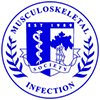Author(s): Constantino Ketonis*, Elie Ghanem, Matthew Austin, James J. Purtill, Javad Parvizi, Joshi Ashish; Rothman Institute, Philadelphia, PA
Title: Periprosthetic Infection: Where Do We Stand With Regard to Gram Stain?
Purpose: Gram stain has been reported to carry a very high specificity and a poor sensitivity in detecting periprosthetic infection. This study intended to examine the role of this diagnostic test in a large cohort of patients from single institution.
Methods: A review of our joint registry database revealed that 453 total knee arthroplasty (TKA) and 551 total hip arthroplasty (THA) of which 171 and 150 cases were respectively infected underwent revision surgery during 2000-2005 and had intraoperative cultures available for interpretation. A positive gram stain was defined as the visualization of bacterial cells or many leukocyte (>5 per high power field) under the smear. The sensitivity, specificity, and predictive values of the each individual diagnostic arm of Gram stain were determined. Combinations were performed in series that require both tests to be positive to confirm infection and in parallel that necessitate both tests to be negative to rule out infection. This analysis was performed for THA and TKA separately and later compared for each joint type.
Results: The presence of organism cells and many neutrophils on a Gram smear had high specificity (98%-100%) and positive predictive value (89%-100%) in both THA and TKA. The sensitivities (30%-50%) and negative predictive values (70%-79%) of the two tests were low as expected among both joint types. When the two tests were combined in series the specificity and positive predictive value were absolute (100%). The sensitivity (43%-64%) and the negative predictive value (82%) improved among both THA and TKA.
Discussion: The presence of organism cells or many leukocytes on the Gram smear can confirm PPI in TJA. As expected the sensitivity and negative predictive value of the two tests were quite low, and therefore infection could not be safely ruled out. Although the two diagnostic arms of Gram stain can be combined to achieve improved negative predictive value (82%), Gram stain continues to have little value in ruling out PPI. With the advances in the field of molecular biology novel diagnostic modalities need to be designed that can replace these traditional and poor tests.

